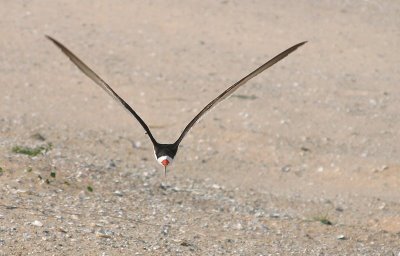
I have been shooting with the Canon EOS D60 for three years. Most of the time it has performed as expected, maybe a little slow at starting up, but acceptable 95% of the time. This camera has gone all over the world from sea level to 17,000 ft altitude. What most of photographed objects had in common was slow or no movement.
This all changed when a group of photographers went on a Black Skimmer shoot in Florida. To get the best quality and the most flexibility I use the RAW format. It took less than 5 min to figure out that this camera was chocking on continuous RAW shooting. After 5-7 RAW shots the camera would pause for up to 30 sec to clear the buffer. The situation improved some after switching to jpeg, but now we're compromising.
An ever bigger problem than the speed, was the accuracy for the tracking focus. We were shooting fast flying birds from 30-200 ft, flying sideways, towards you, up, down, etc. It was very difficult to get the focus to track the bird. In fact of the several hundred action shoots, less than 10% were useful. This is not all due to focus and speed, but it would account for the biggest share of the missed and bad photos.
The last reason has nothing to do with the camera, but the challenging situation. Imagine a bird flying 30 mph suddenly appears in front of you. It is relatively easy to spot with you wide angle eyes. But if you want a decent shoot you have to zoom in. Finding the fast moving bird in a small field of view is very challenging indeed.
One of the fellows was shooting with a Nikon D2x. He filled up 10 GB in less than an hour. The Nikon was shooting Raw (NEF) format at the speed of an M-16 (5 fps) and it never chocked. A third person was shooting with a Canon EOS 20D, with better results than the D60. The frame rate is higher and the focusing is better.
The other aspect of the shoot was the type of lens that was used. I personally used a 28-135mm lens. With the 1.6x factor it is equivalent to a 45-220mm. This proved to be a decent choice for close flybys , but a little short for anything else. The Nikon fellow was using a 70-200mm lens, 1.5x factor and that was probably the right lens for the job. The final shooter was using a 100-400mm lens and it was to big and heavy and only proved useful in 400mm zoom of still birds.

